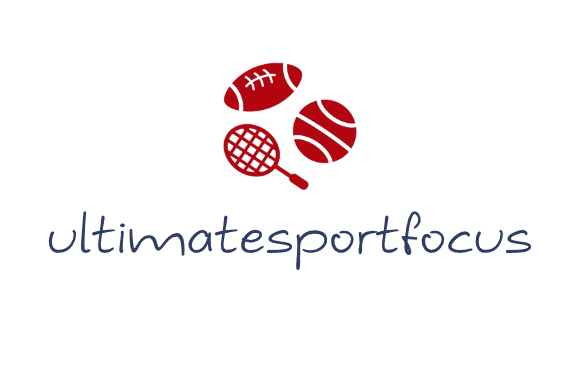In the world of teamwork, knowing your crew is half the battle. Team member profiles are like the secret sauce that turns a group of individuals into a well-oiled machine. They reveal not just skills and roles but also quirks, interests, and that one random fact that makes everyone laugh. Who knew that the quiet one in accounting can recite the entire script of a classic movie?
Team Member Profiles
Team member profiles play a vital role in the dynamics of a team. These profiles summarize individual skills, roles, personalities, and interests, transforming a group into a cohesive unit.
Definition of Team Member Profiles
Team member profiles include comprehensive overviews of individuals within a group. Skills, experience, and personal interests provide insights into each member’s contributions. Profiles also highlight unique traits, which can enhance collaboration and understanding.
Importance of Team Member Profiles
Team member profiles foster effective communication and collaboration among team members. By knowing each person’s strengths, teams can allocate tasks strategically. Profiles also promote inclusivity, allowing quieter members to showcase hidden talents. Understanding these profiles builds trust and camaraderie, increasing overall team performance.
Key Components of Team Member Profiles

Understanding key components of team member profiles significantly enhances teamwork dynamics. Each element provides crucial insights into how individuals contribute to team success.
Skills and Expertise
Team member profiles include detailed information on skills and expertise. This section highlights technical proficiencies, such as programming languages for developers or marketing strategies for marketers. Examples of relevant certifications can showcase qualifications. Identifying transferable skills aids in task delegation, ensuring the right person handles specific projects. A well-defined skills inventory fosters optimal resource allocation within teams.
Roles and Responsibilities
Roles and responsibilities clarify each member’s contributions within the group. This part outlines specific job functions and expectations for each individual, such as project manager, designer, or analyst. Clear delineation of roles reduces ambiguity and promotes accountability. When everyone understands their responsibilities, it enhances collaboration and workflow efficiency. Stating these roles encourages team members to leverage their strengths and support one another effectively.
Communication Style
Communication style plays a vital role in team interactions. Profiles should describe preferred methods to share ideas, such as verbal, written, or visual communication. Identifying whether a team member thrives in group discussions or prefers one-on-one conversations informs team dynamics. Recognizing diverse styles fosters a culture of inclusivity and respect, contributing to open dialogue. Embracing these differences enhances relational rapport and strengthens teamwork.
Benefits of Using Team Member Profiles
Team member profiles enhance overall team dynamics through various key benefits.
Enhanced Team Collaboration
Enhanced collaboration emerges when team member profiles are utilized effectively. Each profile provides insights into individual skills and interests, which fosters open communication among members. As members learn about each other’s strengths, they can better complement one another on tasks. Sharing knowledge, for example, allows for diverse perspectives and innovative solutions. Collaboration is elevated when quieter members reveal unique talents, enriching team projects. Profiles also encourage recognition of these contributions, which strengthens relationships and builds trust. A deeper understanding of team dynamics makes it easier to navigate challenges together.
Improved Project Management
Improved project management stems from the clarity provided by team member profiles. Profiles detail specific roles and responsibilities, helping project managers allocate tasks efficiently. By understanding each member’s expertise, managers can match tasks to the right individuals, promoting productivity and accountability. Tracking skills also allows for targeted training and development, further enhancing team capabilities. Clearer communication channels emerge as team members recognize preferred styles. This awareness minimizes misunderstandings and keeps projects on track. Ultimately, a well-structured team can adapt to shifts in project demands seamlessly.
Best Practices for Creating Team Member Profiles
Creating effective team member profiles requires careful attention to detail and ongoing engagement. Profiles should be dynamic tools that reflect the evolving nature of each team member.
Collecting Relevant Information
Focus on gathering comprehensive data about skills, experiences, and personal interests. Encourage each team member to share specific details about their professional background and hobbies. Asking targeted questions about past projects and relevant trainings yields valuable insights. Utilize surveys or informal conversations to gather information that highlights individual strengths. Consider including personal anecdotes that illustrate unique talents. This approach fosters a deeper understanding of each team member’s contributions and encourages strong collaboration.
Keeping Profiles Updated
Regularly revising team member profiles ensures relevance and accuracy. Schedule periodic check-ins to assess changes in roles, responsibilities, or skills. Encourage team members to update their profiles when they acquire new certifications or participate in significant projects. Highlight the importance of maintaining current information to facilitate effective collaboration. Updating profiles enhances team dynamics, as it keeps every member informed about the strengths of their peers. Timely updates nurture trust and accountability, ensuring that profiles continue to serve their purpose in the team’s growth.
Enhanced Productivity
Harnessing the power of team member profiles can significantly elevate team dynamics. By providing a clear understanding of each individual’s skills and interests, teams can foster collaboration and inclusivity. This approach not only highlights hidden talents but also promotes open communication and trust among members.
Regularly updating these profiles ensures they remain relevant and useful. As teams evolve, so do their needs. Embracing this practice leads to improved project management and enhanced productivity. Ultimately, a well-rounded team equipped with comprehensive profiles can adapt to challenges and achieve greater success together.

